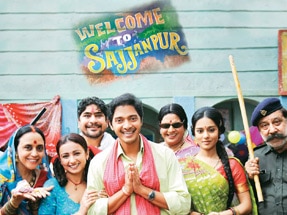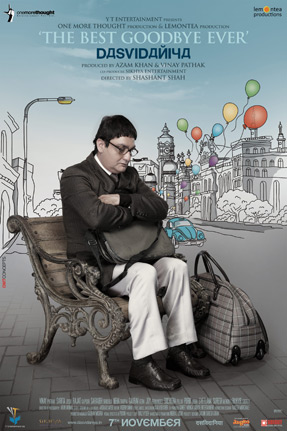Arts
Why Are Small Films, Suddenly In Big Trouble?

It is reported that over a 100 small films, censor-approved and ready, are rotting in the cans with no takers
| Remember Oye Lucky Lucky Oye, Khosla ka Ghosla, Aamir, Mumbai Meri Jaan, Welcome to Sajjanpur, Dev D, Mithya and Bheja Fry? Wasn’t it just the other day that these films were hymned and celebrated by critics, industry-wallahs, trade and the audience alike, and termed as the “New Parallel Cinema” of the new-age? Remember how the intelligentsia — the educated, discriminating, middle-class — lapped them up and eagerly looked forward to more? Even the likes of Mr. & Mrs. Iyer, 15 Park Avenue and Gandhi, My Father were celebrated by the discerning and went heavy-duty on the word-of-mouth track.
So, what happened?
It is reported that over a 100 small films, censor-approved and ready, are rotting in the cans with no takers! One major player in this category confessed he had six unsold movies on hand. So is this genre, which had spawned sub-brands, such as UTV’s Spotboy, PNC’s Guerilla, Mukta Arts Malpix, Sanjay Gupta’s White Feather Films Arthouse, and Balaji’s Alt Entertainment, on the verge of a fade-out? Tough call, but insiders point to Dibakar Banerjee’s (whose earlier Khosla and Oye Lucky were thumping successes) latest Love, Sex Aur Dhoka as the first deadly thud that started it all. After the initial hullabaloo — shot in high definition, devoid of stars, original concept — the Ekta Kapoor product designed to zonk the multiplex audience with a cathartic, never-before-experience, mysteriously zoomed out and landed in a DVD avatar in shelves across the globe within two weeks of release. Wassup?
Depends on who who’s telling. The UTV honchos, perhaps the biggest backers of this genre, admit it was no easy task getting films like A Wednesday, Aamir, Mumbai Meri Jaan or Sajjanpur off the block. “Solid investments, both monetary and marketing focus had to be called upon. No regrets. We went into these projects with our eyes open and remain proud of our association with these excellent products,” says Siddharth Roy Kapur, CEO of UTV Motion Pictures. However, when recession struck, marketing budgets for these small films took a big hit making their entry non-viable. Kapur is quick to explode a popular myth of small films being risk-free, commercially. He insists that the exact opposite is true, “If they don’t hit the bull’s eye, you could end up losing your total investment.” Adds a trade analyst, that while tons of money were indeed lost on multi-starrer bombs such as Drona, Chandni Chowk to China, Luck, Kidnap, Kambaqt Ishq and now the latest Kites and Raavan, people will still happily stand in line to see their favorite stars in big glossy movies rather than glamor-free, star-less fare like Saas Bahu aur Sensex, Dasvidanya, Aamras, Ugly aur Pagli, or Raat Gayi Baat Gayi.
The other reason, say insiders, was the greed of the quick-buck, on-the-make financiers of these movies. Witnessing the success of small films, a quick appreciation on investment, and the viability of cashing in on numbers (six small films as opposed to one risky monster-budget, mega-starrer?) quantity preceded quality, leading to shoddy, even badly-made films with little style and less substance. Naturally, they had to be peeled off the ceiling! Finally, there is the terrifying logic articulated by a hot-shot producer: “Most small films are on DTH (Direct to Home) within days of their release. When viewers go to multiplexes and are offered a choice between SRK, Aamir and Akshay with Kareena, Kat and Priyanka and Vinay Pathak and Rajat Kapoor with Neha Dhupia and Neetu Chandra, having to shell out the same big bucks, any prizes for guessing which side is going to win, hands down?” So, at the end of the day, what gives? For one, substance and content remain key for small films to make big waves. Two, big ideas rather than big bucks, both in content and marketing focus in terms of bold, unique, unusual, or unconventional innovation have to be dreamed up and creatively leveraged. Finally — and this might be critical — can’t ticket prices for small films be rationalized to make them more realistic in confrontation with mega-crore glossies? As a perceptive Bollywood producer explained, it is the multiplexes, originally created to promote small films, that pose the biggest roadblocks to small films. Can or will that happen? This demand, from saner voices within the industry for alternative, smaller auditoriums for small films has been voiced for the last five decades. Only P.C. Sorcar or Houdini can help otherwise.
|



